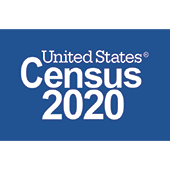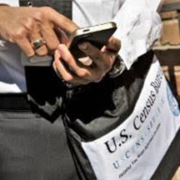San Rafael, CA – Mailboxes across the country soon will receive official notifications about the start of the 2020 U.S. Census, and Marin County is looking to hire a few more $25-per-hour temporary workers to assure an accurate local count.
Census takers must be a U.S. citizen, at least 18 years old, and have a valid Social Security number. A list of job qualifications is online, and the deadline to apply is March 15.
“We’re getting there, but we haven’t quite hit that hiring goal,” said Kristin Drumm, Senior Planner with the Marin County Community Development Agency (CDA).
An invitation to participate will arrive by mail between March 12 and March 20 including easy-to-follow instructions on how to respond to the census. It’s expected that 95 percent of U.S. residents will receive the invitation by mail.
This census is being labeled as the “first digital census” whereby households will have the option of responding online, by mail, or by phone. The invitations will remind respondents to include everyone living in the household, whether they are related or not.
An accurate resident count is critical because much of the funding triggered by the gathered data fuels programs that help lower-income and underrepresented populations. For instance, the census results determine how many dollars go to California for school lunches, Medicaid, CalFresh food assistance, the Children’s Health Insurance Program (CHIP) and many other programs. Undercounting on the census can lead to the loss of a seat in the U.S. House of Representatives and federal funding shortfalls.
By its own estimates, the federal government expects less than 1 percent of households will be counted in person by a census official, most of those being residents living in remote areas.
What’s going on locally with the census? In 2019, MarinCensus2020.org was created and a Complete Count Committee was launched to plan and execute census education and outreach activities with encouraging messages in multiple languages that explain the impact of participation and assure confidentiality. The website and committee were collaborations by the County CDA, the City of San Rafael, the City of Novato, Canal Alliance and Community Action Marin. In addition, Marin CDA entered into partnerships with several community-based organizations to support education and outreach activities in the designated historically undercounted communities.
According to data provided by the California Census Office, Marin residents least likely to fill out a census form or considered “hard to count” are those living in West Marin, Marin City, San Rafael’s Canal neighborhood and Lincoln Avenue, Terra Linda, and pockets of downtown Novato. Historically undercounted populations include racial and ethnic minorities, people who speak languages other than English, those with low internet proficiency or access to technology, children 5 and under, adults over the age of 65, young people who move frequently or have plans to move soon, and rural residents.
“If our census-savvy residents know people who fall into those hard-to-count categories, we could use help in putting them at ease and encouraging them to participate,” Drumm said. “Our top focus is to reduce the number of people who are considered at risk for not taking part in the count.”
Local organizers remain concerned about the five identified barriers that might prevent people from participating in the count:
- concerns about data privacy and confidentiality;
- the fear of repercussions;
- distrust in all levels of government;
- the feeling that it doesn’t matter to be counted; and
- the belief that filling out the census form might not benefit the participant’s family or community.
There is more information on the national 2020 Census Jobs webpage about applying, and the Census Bureau’s social media toolkit helps residents promote census jobs in the community. Most questions about the local census efforts are answered on MarinCensus2020.org and www.census.gov.





